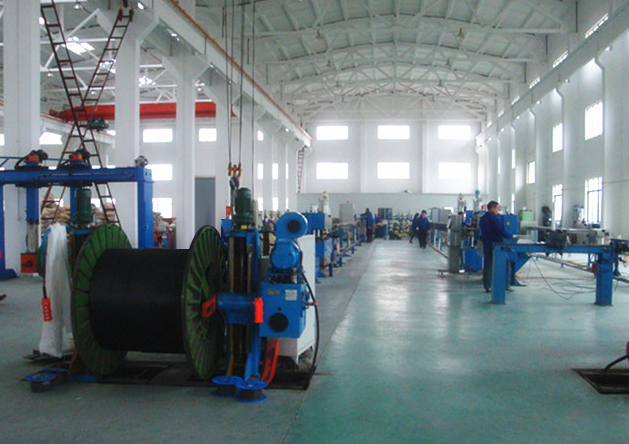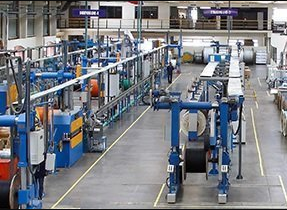Classification of fiber (What are the classification of fiber) Optical fiber classification / fiber performance characteristics
Fiber classification
1 by transfer mode:
The mode propagating in the fiber is the electromagnetic field shape present in the fiber, or is the light field form (HE). Various fields are all the results of multiple reflections and interferences in the optical waveguide. Various modes are discontinuous discrete. Since the standing wave can be stable in the fiber, it is reflected in the optical fiber cross section, which is the light field of various shapes, ie various spots. If it is a spot, we call this fiber as a single-mode fiber, if it is more than two places, we call it multimode fiber.
2 Clear according to the diameter of the core:
★ 50/125 (m) Capite multimode fiber
★ 62.5 / 125 (m) Capore enhanced multimode fiber
★ 8.3 / 125 (m) Capite type single mode fiber
3 According to the refractive index distribution of the fiber core:
★ Step Index Fiber, referred to as SIF;
★ Gradient fiber (Graded Index Fiber, referred to as GIF)
★ Ring fiber;
★ W-type fiber
What are the classification of fibers, different types of fiber features [detailed]

Multimode fiber
At a certain working wavelength (850 nm / 1300 nm), there are multiple modes to transmit in the fiber, which is called multimode fibers. This fiber has a relatively large core diameter (50 to 80m) and a diameter of 125? M. The step refractive index multimode fiber has a sudden change between the core and the coating, and the gradient refractive index multimode fiber has gradually changed between the core and the coating. The former is limited to approximately 50 mbit / s and the inner range of 1 gbit / s. For gradient fibers, the refractive amount gradually decreases from the core wire. The light is transmitted faster in a material having a low refractive index. This will cause light to transmit quickly in the external material than in the core wire. The final result is that all light tends to arrive at the same time. But this correction still has distance limitations.
Due to dispersion or aberration, the transmission performance of this fiber is poor, the frequency band is narrow, and the transmission capacity is also small, and the distance is relatively short.
What are the classification of fibers, different types of fiber features [detailed]
Single mode fiber
Single mode fibers transmit only main mode, that is, light is only transmitted along the inner core of the fiber. Since the mode-color scatter is completely avoided, the transmission band of the single mode fiber is wide, and therefore, it is suitable for large-capacity, long-distance optical fiber communication. Such fibers have small core wires (7 to 10m), opposed to multi-path reflection in the multi-mode fiber, and such core wire is propagated along the cable according to the straight single path. However, another scattering form called dispersion is another problem (discussed later). The usual light source is a laser. Such fibers are complex, but with larger communication capacity and farther transmission distance.
The fiber specification lists the diameter of the core wire and the coating in the form of a score. For example, the minimum recommended type of FDDI (fiber distributed data interface) is 62.5 / 125M multimode fiber. This means that the core wire is 62.5m, while the core wire and the surrounding coating are 125m. The coating diameter of the connection fiber must be the same, because the connector typically refers to the coating diameter adjustment core wire.
The core wire specification of the step refractive and gradient refractive multimode fiber is usually 50, 62.5 or 100 m. The cladding diameter of the step mode cable is L25M.
The core wire diameter of the single mode fiber is usually 7 to L0m, and the coating diameter is 125m.

ITU has defined a series of recommendations that describe the geometric properties and transmission properties of multi-mode and single-mode fibers. The following are four most important recommendations:
ITU G.651 discusses multimode gradient refractive fibers having a 50m normal core diameter and 125M normal coating diameter.
ITU G.652 discusses single-mode NDSF (non-tone-free offset fiber). Most of the optical cables installed in the 1980s are this cable. Transmission occurs in the range of L310 nm, and the signal scattering here is minimal. The scattering in length causes signal problems, which will be discussed later. G.652 Fiber Support The following distance and data rate: 1000km is 2.5Gbit / s, 60km is logbit / s, 3km is 40g / bits.
ITU G.653 discusses single-mode dispersion offset fiber. Such an optical fiber uses a design method to "offset" to the area L550 nm wavelength range minimized by scattering. In this range, attenuation is also minimized, so the cable distance can be longer.
What are the classification of fibers, different types of fiber features [detailed]
ITUG.655 discusses single-mode NZ-DSF (non-zero-dispersion offset fiber) fiber, which uses dispersion characteristics to inhibit the growth of four wave mixes. Four wave mixing is a harmful effect on WDM (wavelength division multiplexing) system. NZ-DSF supports high power signals and longer distances, as well as a rate of LOGBIT / S or higher spaced DWDM (intensive WDM) channels. Lucent True Wave is an example of such a fiber. It supports the following distance and data rate: 6000km is 2.5Gbit / s, 400km 10Gbit / s, 25km is 40Gbit / s.
G.655 is the latest developments of fibers. In particular, G.655 is optimized for the operation of the WDM and the seabed cable. It uses dispersion, producing a good effect. Dispersion helps to reduce the effect of four wave mixing (FWM). This effect occurs in the DWDM system when the three wavelengths are mixed, and the resulting fourth wavelength overlaps and interferes with the original signal. This effect has occurred in the DWDM system.
With DWDM, single fiber can transmit thousands of circuits. One is a certain secondary wavelength in the optical window inner light. It has all functions of a single circuit. It is set to use frequency division multiplexing. Each imagination is an infrared ray that is transmitted at 10Gbit / s or higher speeds. The fiber-optic multiplexer divides the spectrum available in the fiber into many individual. For example, Avanex PowerMUX can place more than 800 channels on a single fiber, and the gap between the channel is 12.5 GHz. Because each fiber may have thousands, communication companies rent a whole fiber wavelength is also practical. See "Fiber Network".
DWDM's alternative is a new fiber modulation technology that enhances the function of existing fibers. KeStrel Solution fiber FDM combines FDM (frequency division multiplexing), DSP (digital signal processing), and fiber modulation to improve the performance of existing fibers, especially in low quality fibers (due to short distance) Metropolitan area and SONET system. Fiber FDM enables people to fully access the total bandwidth of the fiber.
What are the classification of fibers, different types of fiber features [detailed]
Optical fiber performance characteristics
Some features of the fiber limit its performance. Fiber of different manufacturers may vary in these characteristics. The main performance limiting factors are attenuation and scattering.



